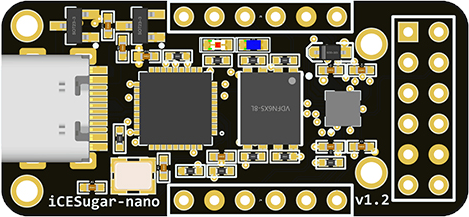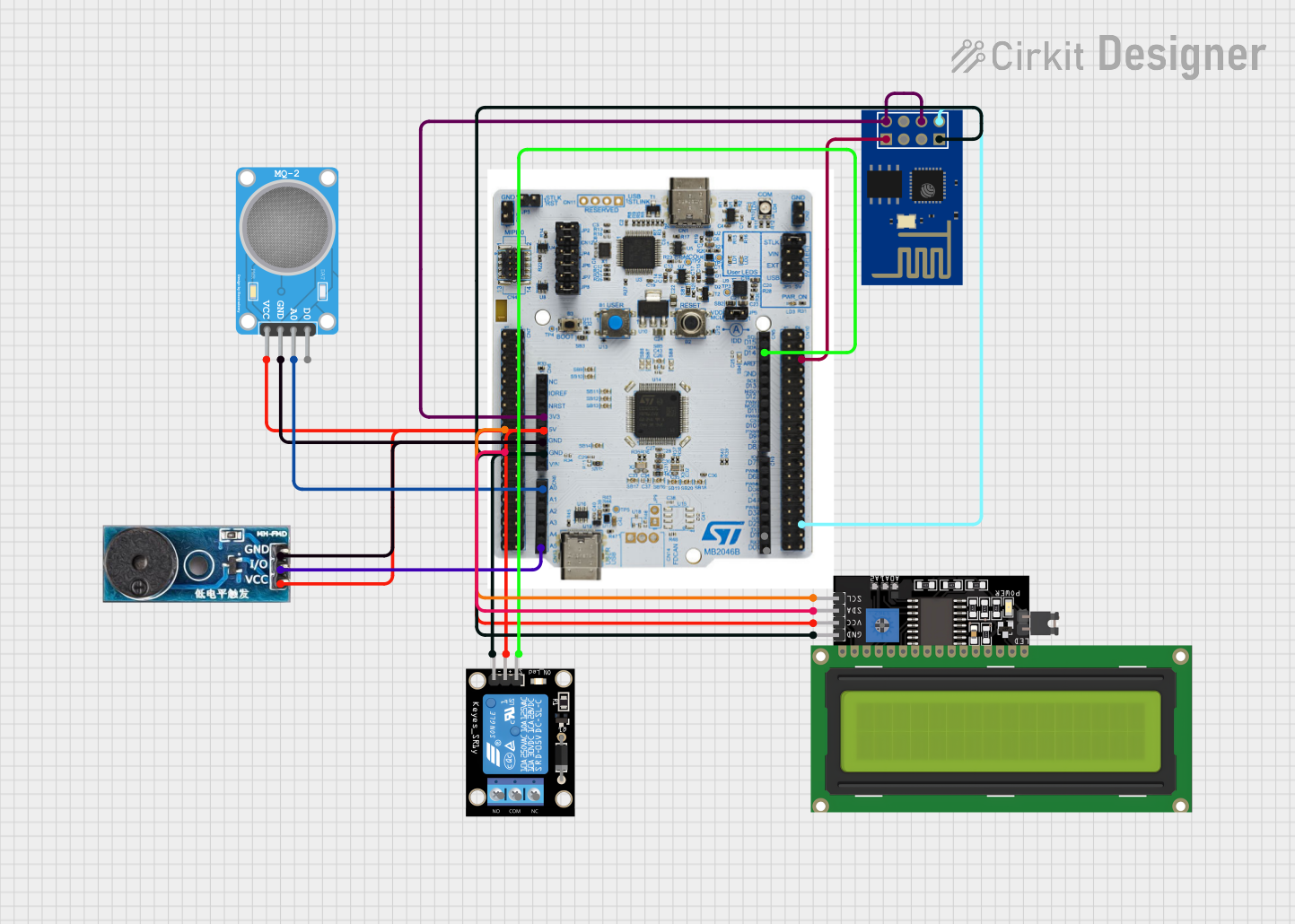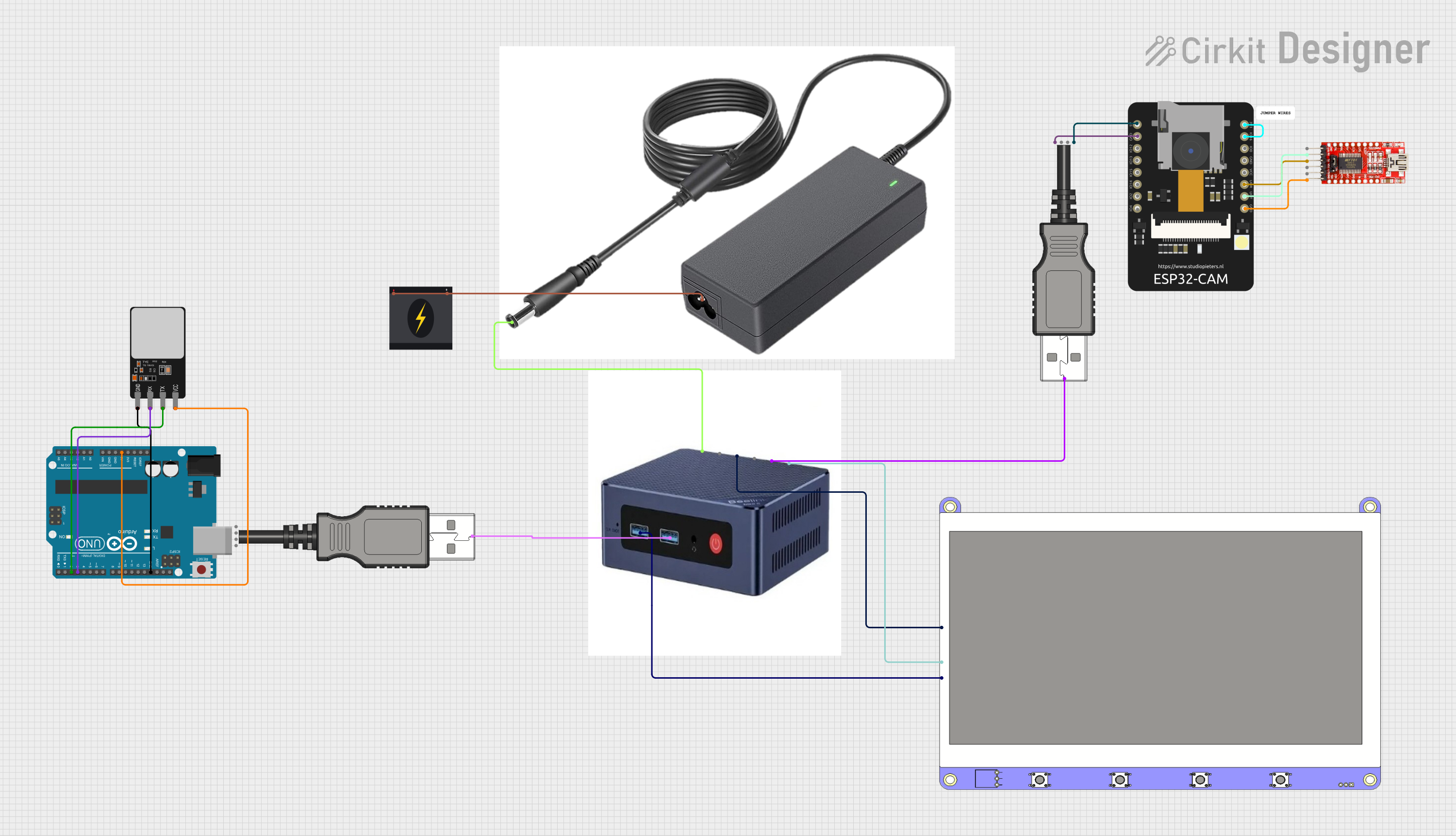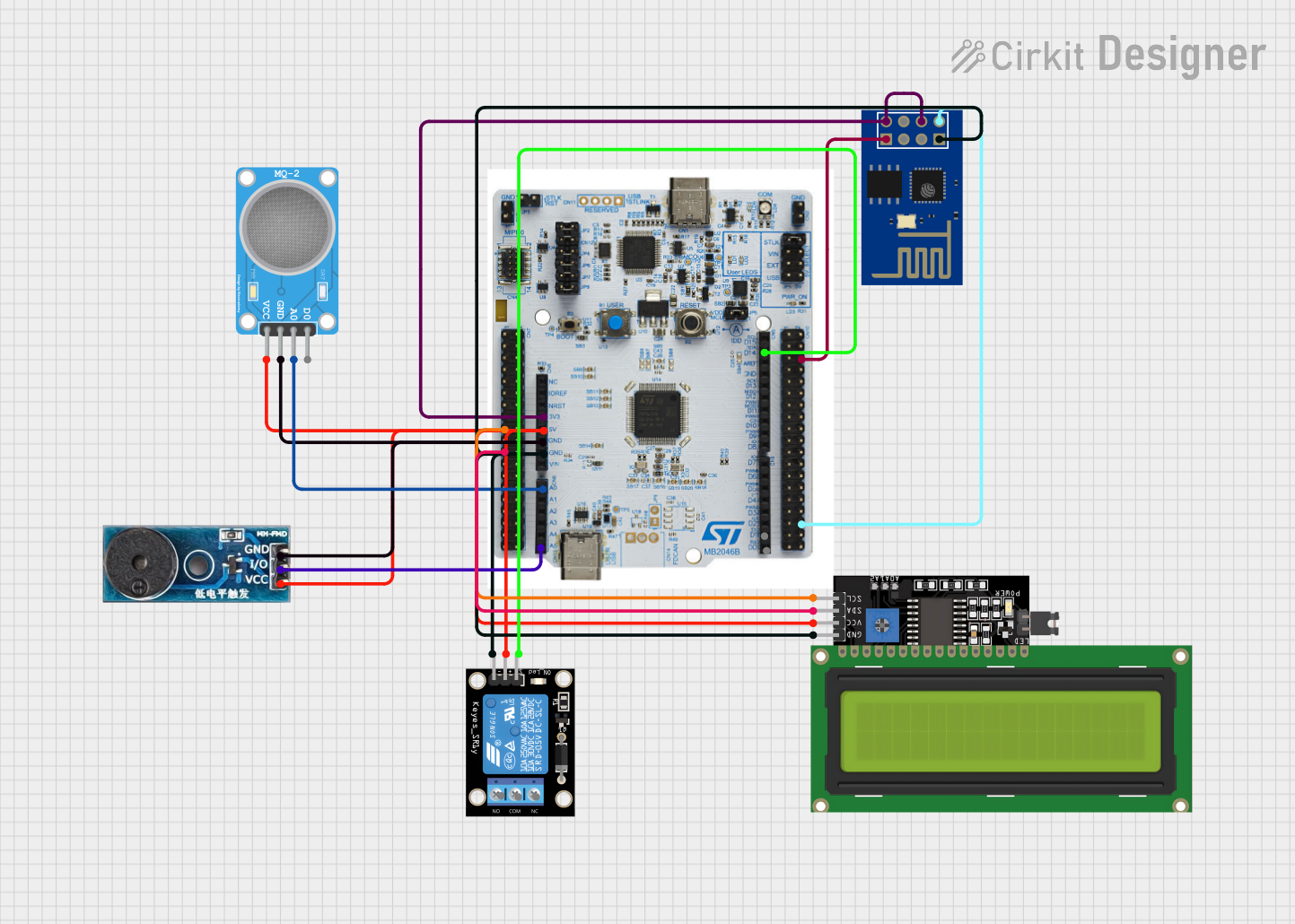
How to Use iCESugar-nano FPGA Development Board: Examples, Pinouts, and Specs

 Design with iCESugar-nano FPGA Development Board in Cirkit Designer
Design with iCESugar-nano FPGA Development Board in Cirkit DesignerIntroduction
The iCESugar-nano FPGA Development Board, manufactured by Muse Lab (Part ID: B0BS19P523), is a compact and versatile platform designed for rapid prototyping and experimentation with digital circuits and systems. It features the iCE40 FPGA, a low-power, high-performance programmable logic device, making it ideal for a wide range of applications.
Explore Projects Built with iCESugar-nano FPGA Development Board

 Open Project in Cirkit Designer
Open Project in Cirkit Designer
 Open Project in Cirkit Designer
Open Project in Cirkit Designer
 Open Project in Cirkit Designer
Open Project in Cirkit Designer
 Open Project in Cirkit Designer
Open Project in Cirkit DesignerExplore Projects Built with iCESugar-nano FPGA Development Board

 Open Project in Cirkit Designer
Open Project in Cirkit Designer
 Open Project in Cirkit Designer
Open Project in Cirkit Designer
 Open Project in Cirkit Designer
Open Project in Cirkit Designer
 Open Project in Cirkit Designer
Open Project in Cirkit DesignerCommon Applications and Use Cases
- Digital circuit design and prototyping
- Hardware acceleration for embedded systems
- Signal processing and data manipulation
- Learning and teaching FPGA programming
- IoT device development
- Custom peripheral design for microcontrollers
Technical Specifications
The iCESugar-nano FPGA Development Board is equipped with the following key features and specifications:
| Specification | Details |
|---|---|
| FPGA Chip | Lattice iCE40LP1K-CM36 (1K logic cells) |
| Clock Frequency | 12 MHz onboard oscillator |
| Flash Memory | 4 Mbit SPI Flash for configuration and user data |
| Power Supply | 5V via USB-C port |
| I/O Voltage | 3.3V (default) |
| GPIO Pins | 21 user-accessible GPIOs |
| Communication Interfaces | SPI, I2C, UART |
| Programming Interface | USB-C (supports open-source tools like icestorm and nextpnr) |
| Dimensions | 25mm x 25mm |
Pin Configuration and Descriptions
The iCESugar-nano provides a 24-pin header for GPIO and power connections. Below is the pinout:
| Pin Number | Pin Name | Description |
|---|---|---|
| 1 | GND | Ground |
| 2 | 3.3V | 3.3V Power Output |
| 3 | IO_0 | General Purpose I/O |
| 4 | IO_1 | General Purpose I/O |
| 5 | IO_2 | General Purpose I/O |
| 6 | IO_3 | General Purpose I/O |
| 7 | IO_4 | General Purpose I/O |
| 8 | IO_5 | General Purpose I/O |
| 9 | IO_6 | General Purpose I/O |
| 10 | IO_7 | General Purpose I/O |
| 11 | IO_8 | General Purpose I/O |
| 12 | IO_9 | General Purpose I/O |
| 13 | IO_10 | General Purpose I/O |
| 14 | IO_11 | General Purpose I/O |
| 15 | IO_12 | General Purpose I/O |
| 16 | IO_13 | General Purpose I/O |
| 17 | IO_14 | General Purpose I/O |
| 18 | IO_15 | General Purpose I/O |
| 19 | IO_16 | General Purpose I/O |
| 20 | IO_17 | General Purpose I/O |
| 21 | IO_18 | General Purpose I/O |
| 22 | IO_19 | General Purpose I/O |
| 23 | IO_20 | General Purpose I/O |
| 24 | IO_21 | General Purpose I/O |
Usage Instructions
How to Use the iCESugar-nano in a Circuit
- Powering the Board: Connect the board to a USB-C power source (5V). The onboard LED will indicate power status.
- Programming the FPGA:
- Install open-source FPGA tools such as
icestormandnextpnr. - Write your Verilog or VHDL code for the desired logic design.
- Use the
yosystoolchain to synthesize your design and generate a bitstream. - Flash the bitstream to the board using
iceprog.
- Install open-source FPGA tools such as
- Connecting GPIOs: Use the 24-pin header to connect external components. Ensure the voltage levels are compatible (3.3V logic).
Important Considerations and Best Practices
- Voltage Levels: The GPIO pins operate at 3.3V. Avoid connecting 5V logic directly to the pins to prevent damage.
- Static Protection: Handle the board in an ESD-safe environment to avoid damaging the FPGA.
- Clock Source: The onboard 12 MHz oscillator is sufficient for most applications. For custom clock requirements, external oscillators can be connected to specific GPIO pins.
- Programming Tools: Ensure you have the latest versions of
yosys,nextpnr, andicestormfor compatibility with the iCE40 FPGA.
Example Code for Arduino UNO Communication
The iCESugar-nano can communicate with an Arduino UNO via UART. Below is an example Arduino sketch to send data to the FPGA:
// Arduino UNO UART Communication with iCESugar-nano
// Sends a simple "Hello FPGA" message every second.
void setup() {
Serial.begin(9600); // Initialize UART at 9600 baud rate
}
void loop() {
Serial.println("Hello FPGA"); // Send message to FPGA
delay(1000); // Wait for 1 second
}
On the FPGA side, you can implement a UART receiver in Verilog to process the incoming data.
Troubleshooting and FAQs
Common Issues and Solutions
FPGA Not Responding to Programming Commands:
- Ensure the USB-C cable is properly connected.
- Verify that the
icestormtoolchain is installed and configured correctly. - Check if the board is in programming mode (refer to the user manual for specific instructions).
GPIO Pins Not Functioning as Expected:
- Confirm that the pins are correctly configured in your FPGA design.
- Check for short circuits or incorrect connections on the external circuit.
Power Issues:
- Ensure the USB power source provides sufficient current (at least 500mA).
- Verify that the onboard power LED is lit.
UART Communication Problems:
- Double-check the baud rate settings on both the FPGA and the Arduino.
- Ensure proper wiring between the Arduino TX/RX pins and the FPGA GPIOs.
FAQs
Q: Can I use a 5V power source with the iCESugar-nano?
A: Yes, the board is powered via USB-C, which provides a regulated 5V input. However, the GPIO pins operate at 3.3V, so ensure external components are compatible.
Q: What software tools are compatible with the iCESugar-nano?
A: The board supports open-source tools like yosys, nextpnr, and icestorm for FPGA development. These tools are widely used for Lattice iCE40 FPGAs.
Q: Can I use the iCESugar-nano for learning FPGA programming?
A: Absolutely! The board is beginner-friendly and supports open-source tools, making it an excellent choice for learning and experimentation.
Q: Is the iCESugar-nano compatible with other microcontrollers?
A: Yes, the board can interface with microcontrollers like Arduino, Raspberry Pi, and others via standard communication protocols (SPI, I2C, UART).